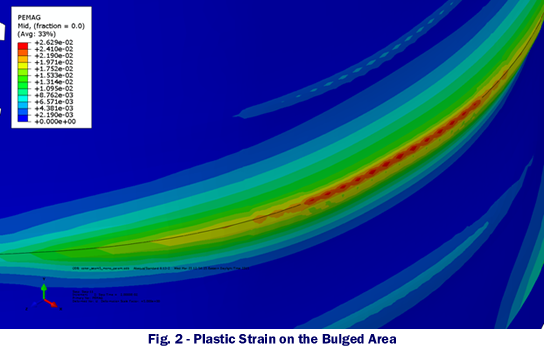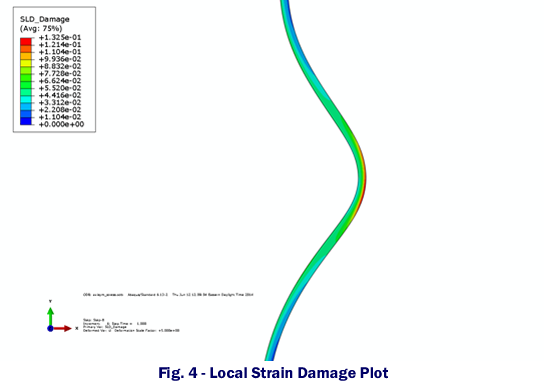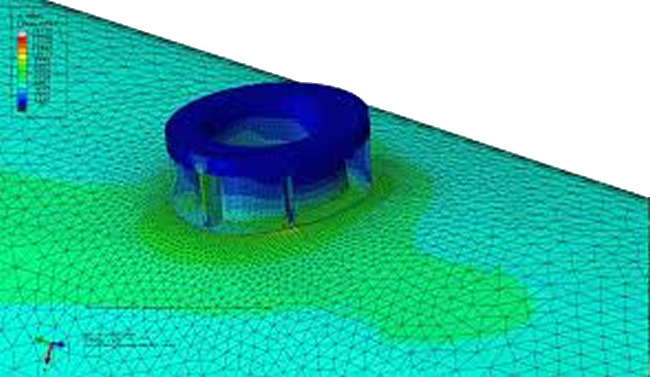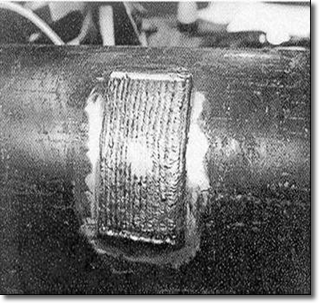Determining “Life” of Bulged Coke Drum
My previous blog on Equipment Health Monitoring (EHM) explains why EHM can be used to improve fatigue life of a coke drums. As explained in this blog, one of the critical locations to be monitored are the circumferential weld seams – where high thermal stresses occur during the operation of the drum. These high stresses over time can cause localized bulges to occur and eventually fail due to fatigue. One way to quantify the amount of bulging and deformation is to do a laser scan of the drum. Once you get the laser scan data, analysis of the data can be done to determine the life of the drum
Laser Scanning
Some in the industry simply create a model of the deformed shape from the laser scan data, and calculate the amount of plastic strain at the bulges and put a limit on the plastic strain to determine whether failure is likely to occur; for example, if the calculated plastic strain is higher than 5% then there is a possibility that a cracking failure could occur. In our opinion, this is a very crude approximation as local failure due to plastic strain is a function of ductility, applied stress and hydrostatic stresses at this location as described in the API-579 Fitness for Service document.
Ratcheting
The bulging of the drum itself is caused by ratchet, which is the interaction between primary stresses such as those due to pressure, and cyclic secondary stresses such as those due to thermal gradients. Also, the fatigue of the coke drums is driven by thermal gradients where the stresses often exceed yield stress by a considerable amount. To estimate the fatigue life of the drum at a bulged location, the temperature distribution at this location is needed. Finite element analyses that only consider the pressure stresses, leaving out the thermal gradients, are ignoring the primary cause of the bulging and cracking. Such bulging and cracking does not occur in vessels that are only subject to internal pressure.
Modeling the Bulge
Another consideration in determining the fatigue life of the bulge is how the bulge is modeled. Some analysts create the bulge geometry as the initial condition for the analysis. This however ignores the plastic strain that has accumulated during the bulging process. Rather than simply assume the vessel starts in the bulged condition, which is done in some finite element analyses, at Becht Engineering we plastically deform the vessel wall to get to the bulged geometry. This creates the plastic strain condition that is found in the bulged vessel, which is an important element in the evaluation of damage and life.
Figure 1 (below) shows the bulged area on the circumferential seam on a coke drum. The maximum bulge is approximately 2.1 inches and this corresponds to what was observed in the field. Figure 2 shows the maximum plastic strain on the bulge is 2.6%. Figure 3 shows the maximum alternating stress range at the bulge during the operation of the drum, including the effect of thermal gradients. Using the alternating stress the fatigue life of the drum is calculated. Figure 4 shows the local strain damage on the bulge. The calculated local strain is 13% of the allowable local strain limit.
The value of the life assessment depends upon the details of the analysis that was performed. Including thermal gradients in the analysis is critical, as well as accurately including the accumulated plastic strain in the model leading to the bulged geometry.




Click to Request More Info from Becht





Ranjan, great reading! Two comments for discussion: 1) significant thermal gradient induced by uneven temperature distribution (hot/cold spots, etc) together with in-phase pressure variation causes plastic strain and initiates ratcheting and bulging; 2) once bugles are formed, local bending effect may accelerate their growth (ratcheting) rate. Thanks.